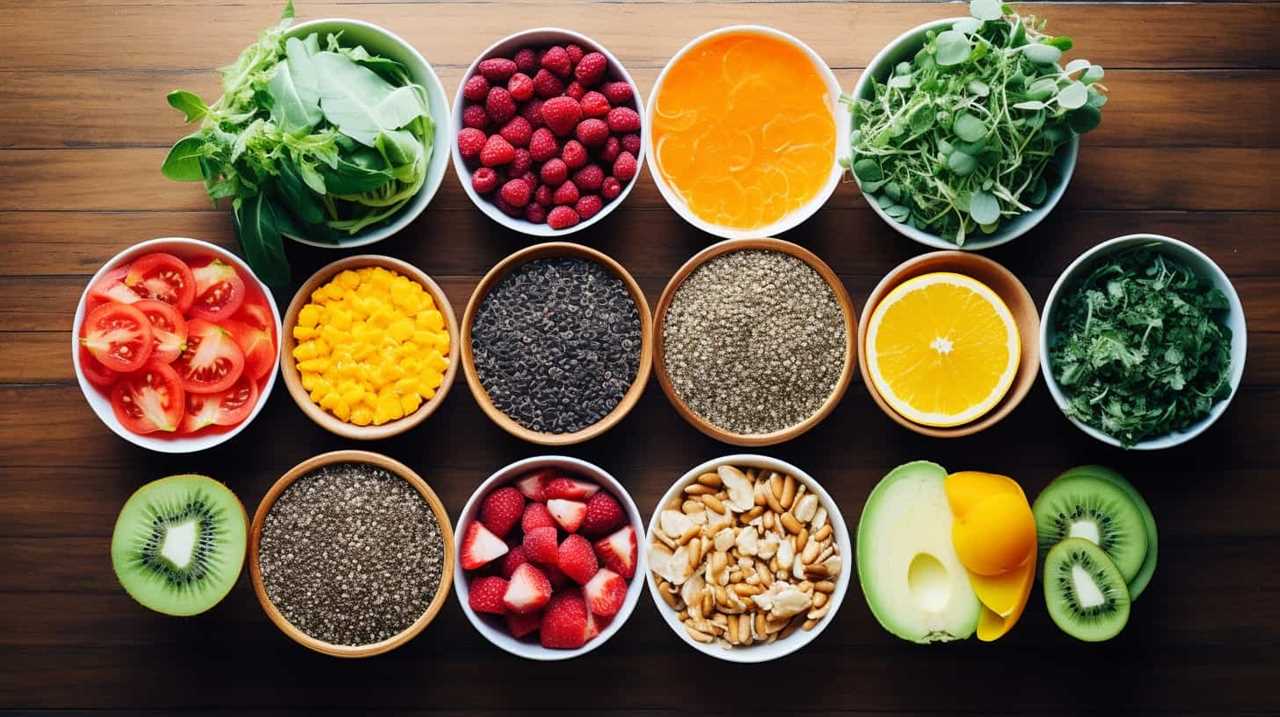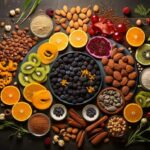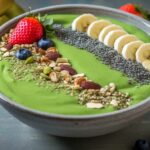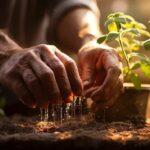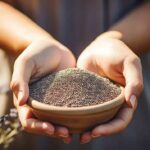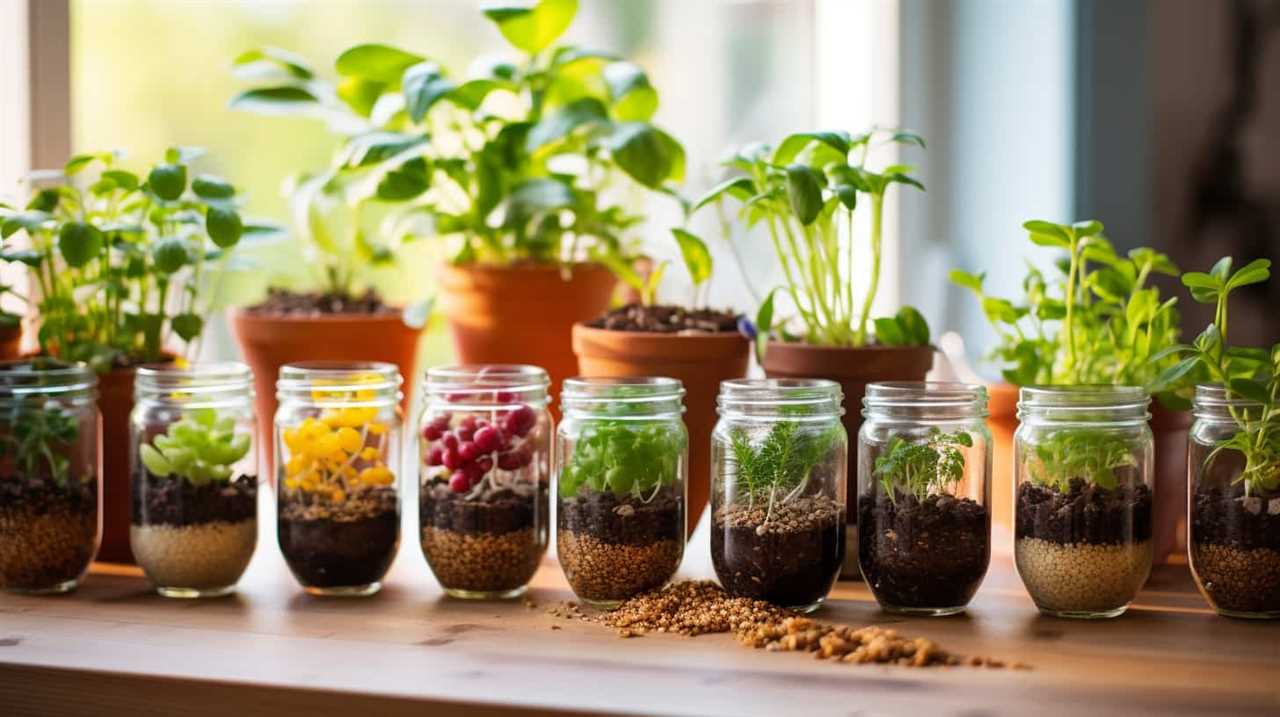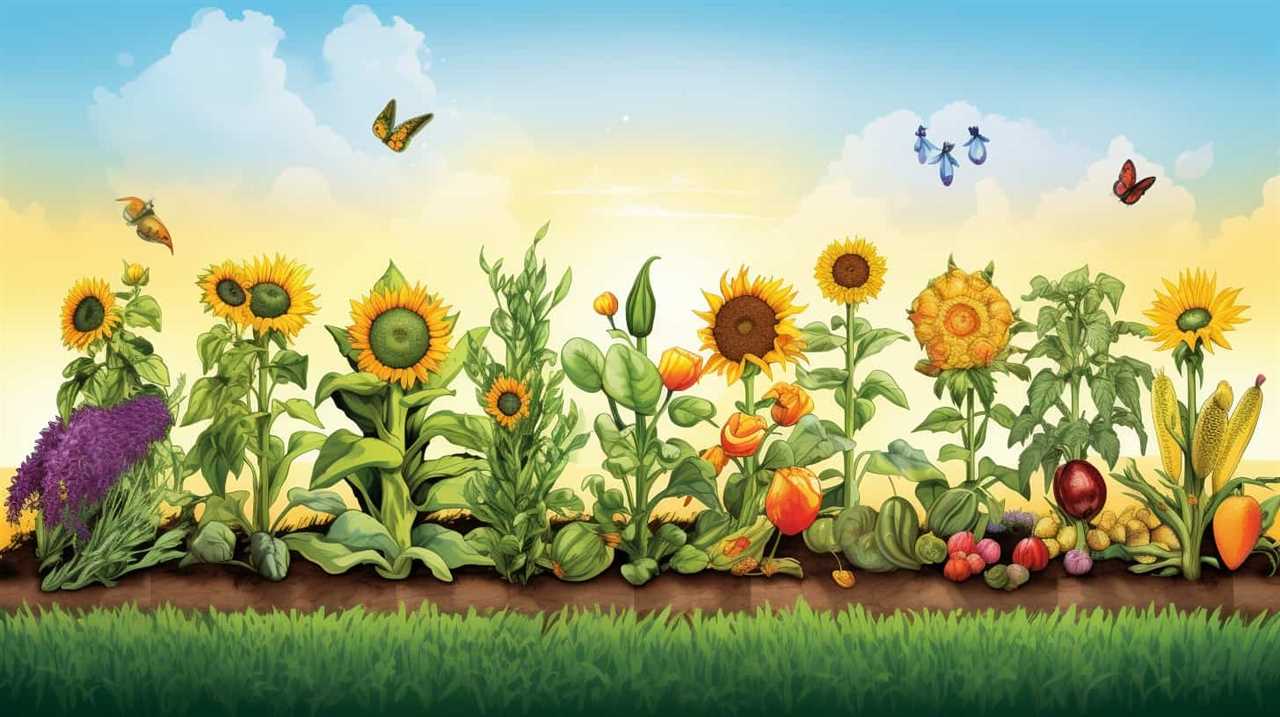Tired of dealing with the challenges of cultivating chia seeds? Look no further, as we have the ideal solution for you!
In this article, we will share with you 12 profitable practices that will revolutionize your chia seed farming. From soil preparation to marketing strategies, we have it all covered.
Forget about the endless trial and error – with our expert guidance, you’ll experience liberation from the challenges of chia seed cultivation.
Get ready to maximize your profits and elevate your farming game!

Key Takeaways
- Mulching techniques help maintain soil moisture, suppress weed growth, and regulate temperature.
- Crop rotation prevents nutrient depletion and minimizes the risk of pest infestations.
- Choosing high-quality chia seeds proven to perform well in specific climate and soil conditions is important.
- Implementing proper irrigation techniques and nutrient management is vital for healthy growth and maximizing yield.
Soil Preparation
For the optimal growth and yield of chia seeds, we begin by preparing the soil. Soil preparation is a crucial step in chia seed cultivation, as it sets the foundation for successful growth and abundant harvests.
To ensure the best results, we employ mulching techniques and crop rotation.
Mulching is an effective practice that helps maintain soil moisture, suppresses weed growth, and regulates temperature. By applying a layer of organic mulch, such as straw or wood chips, we can improve soil fertility and structure, while also reducing the need for water and herbicides.
Crop rotation is another essential technique that promotes soil health and prevents the buildup of pests and diseases. By rotating the chia crop with other plant species, we avoid depleting specific nutrients and minimize the risk of pest infestations. This practice also enhances soil structure, increases organic matter content, and improves overall soil fertility.
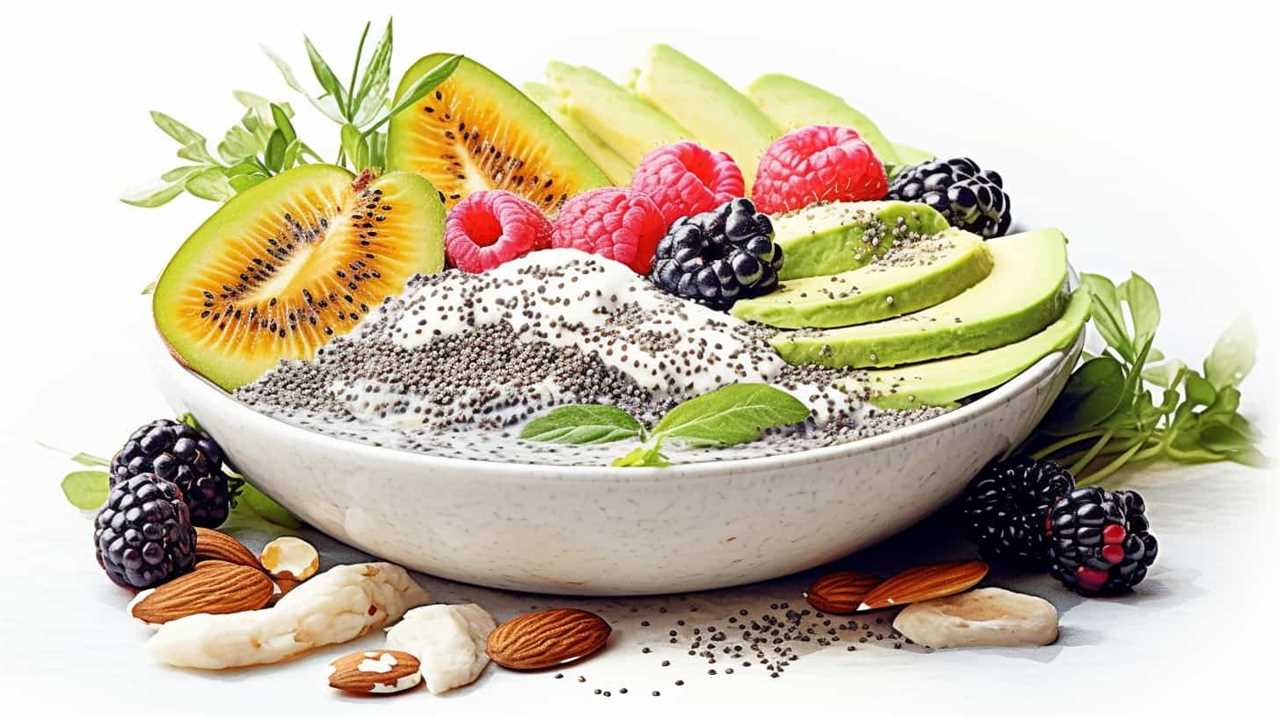
Seed Selection
Selecting high-quality seeds is a crucial step in maximizing the profitability of our chia seed cultivation. When it comes to chia seed varieties, it’s important to choose those that have been proven to perform well in our specific climate and soil conditions. This will ensure that our plants have the best chance of thriving and producing high-quality seeds.
In addition to selecting the right variety, we should also pay attention to seed germination techniques. Pre-soaking the seeds before planting can help to speed up germination and improve overall yield. It’s recommended to soak the seeds for about 30 minutes in water before planting. This will soften the seed coat and promote faster and more uniform germination.
Optimal Planting Time
When determining the optimal planting time for chia seeds, several factors must be considered.
Firstly, the best planting season for chia seeds varies depending on the geographical location and climate conditions.
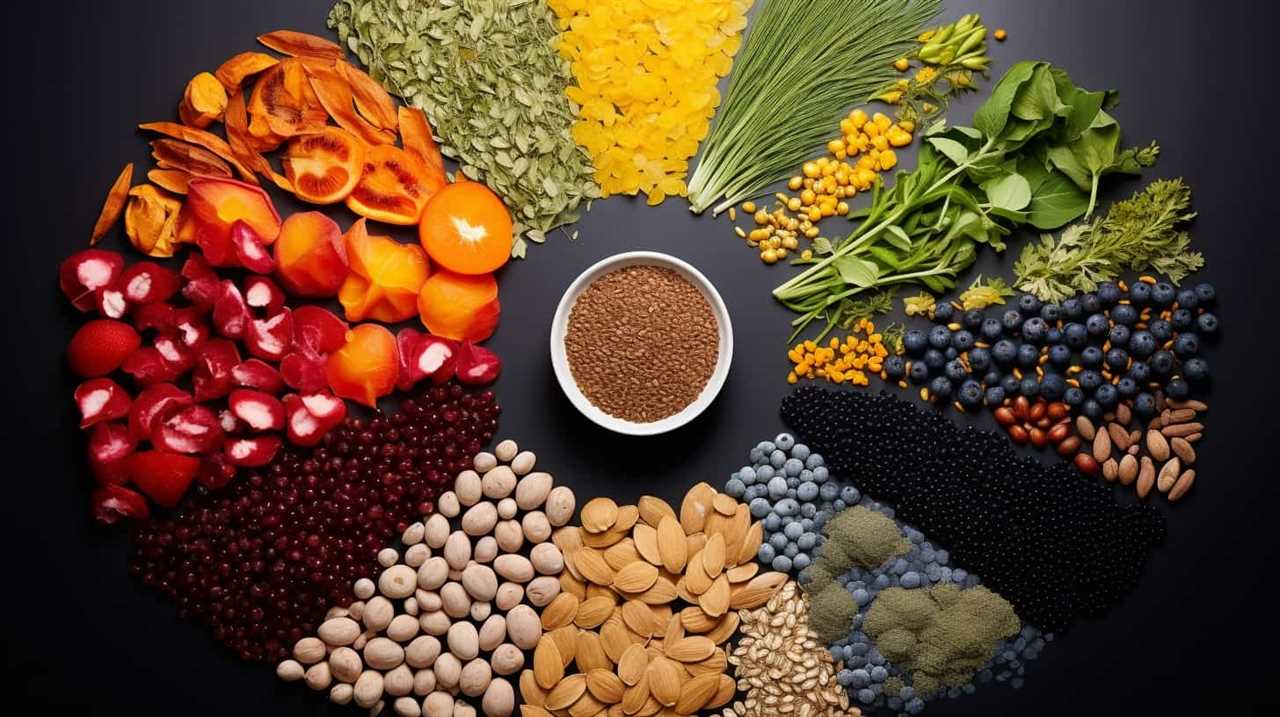
Secondly, it’s crucial to be aware of time-sensitive cultivation tips, such as avoiding late planting to prevent exposure to frost or extreme temperatures.
Best Planting Season
We have found the ideal time to plant chia seeds for maximum yield and profitability. Here are the key factors to consider when determining the best planting season:
- Climate: Chia seeds thrive in warm and dry conditions, with an optimal temperature range between 70°F and 85°F. It’s crucial to choose a time when the risk of frost has passed, as chia plants are sensitive to cold temperatures.
- Day Length: Chia plants require long daylight hours for optimal growth. Therefore, it’s advisable to plant chia seeds during the spring or summer months when the days are longer.
- Soil Moisture: Chia seeds need a well-drained soil with moderate moisture levels. It’s recommended to plant them after the rainy season, when the soil has had a chance to dry out slightly.
- Crop Rotation: To ensure the health of your chia plants and prevent disease buildup, it’s essential to follow a crop rotation schedule. Avoid planting chia seeds in the same area for consecutive years.
Time-Sensitive Cultivation Tips
After considering the key factors for determining the best planting season discussed earlier, it becomes crucial to focus on time-sensitive cultivation tips to ensure optimal planting time for chia seed cultivation.
Time-sensitive planting techniques are essential for maximizing yield and reducing the risk of crop failure. One important tip is to monitor the weather conditions closely. Chia seeds require warm soil temperatures of at least 60°F (15°C) for optimal germination. By planting when the soil has reached this temperature, you can ensure that the seeds will sprout and establish well.
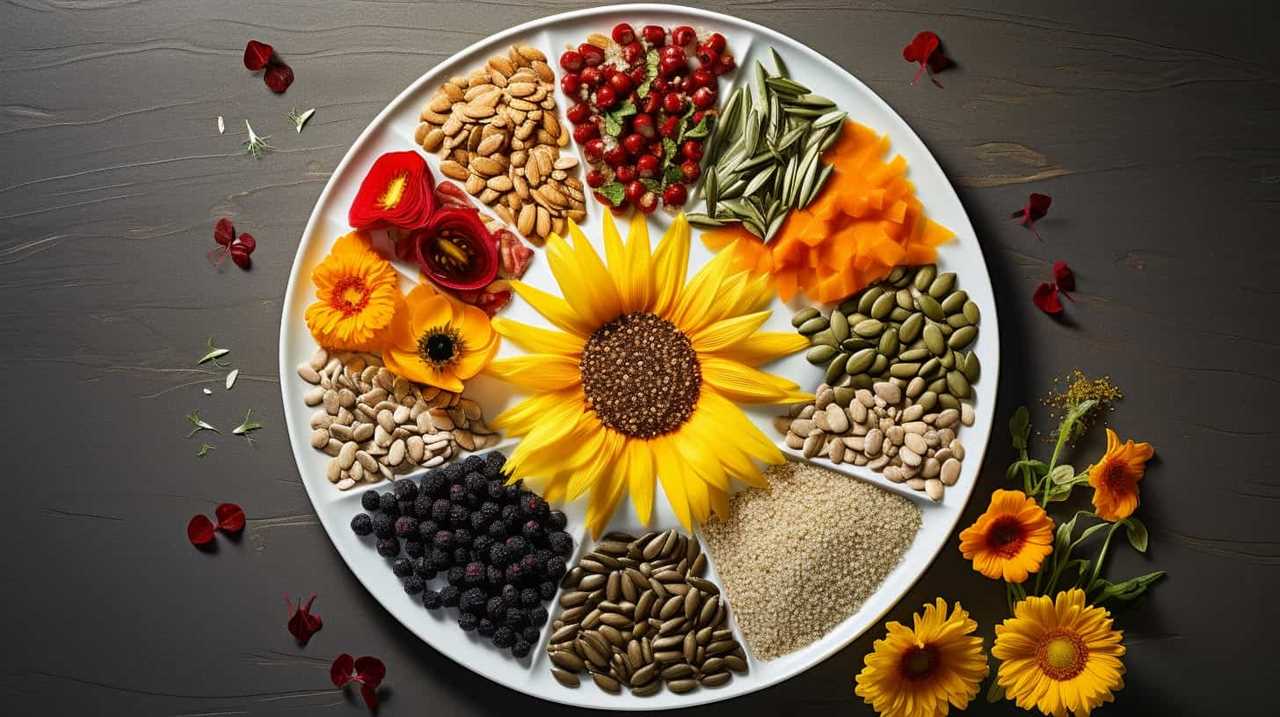
Additionally, regular maintenance practices such as weed control and soil moisture monitoring are vital to promote healthy growth and prevent competition for nutrients and water.
These time-sensitive cultivation tips are crucial for successful chia seed cultivation.
Now, let’s delve into the subsequent section about irrigation techniques.
Irrigation Techniques
To ensure optimal growth and yield, implementing efficient irrigation techniques is crucial for successful chia seed cultivation. Here are four irrigation techniques that can help you achieve the desired results:

- Drip Irrigation: This technique involves delivering water directly to the root zone of the chia plants through a network of tubes or pipes with emitters. It ensures minimal water wastage and allows for precise control over the amount of water delivered.
- Sprinkler Irrigation: With this technique, water is distributed over the chia field through sprinklers. It’s a cost-effective method that provides uniform coverage and helps prevent water stress in the plants.
- Moisture Sensors: Installing moisture sensors in the soil can help monitor the moisture levels accurately. This enables you to irrigate the chia plants only when necessary, avoiding overwatering or underwatering.
- Mulching: Applying a layer of organic mulch around the chia plants helps retain soil moisture, reducing the frequency of irrigation and conserving water resources.
Nutrient Management
When it comes to nutrient management in chia seed cultivation, there are three key points to consider: soil nutrient optimization, fertilizer application techniques, and nutrient deficiency prevention.
To ensure optimal growth and yield, it’s important to analyze the soil composition and adjust the nutrient levels accordingly.
Proper application of fertilizers, taking into account the specific nutrient requirements of chia plants, is essential for maximizing their potential.
Lastly, regular monitoring and preventative measures can help prevent nutrient deficiencies, ensuring healthy and productive chia crops.
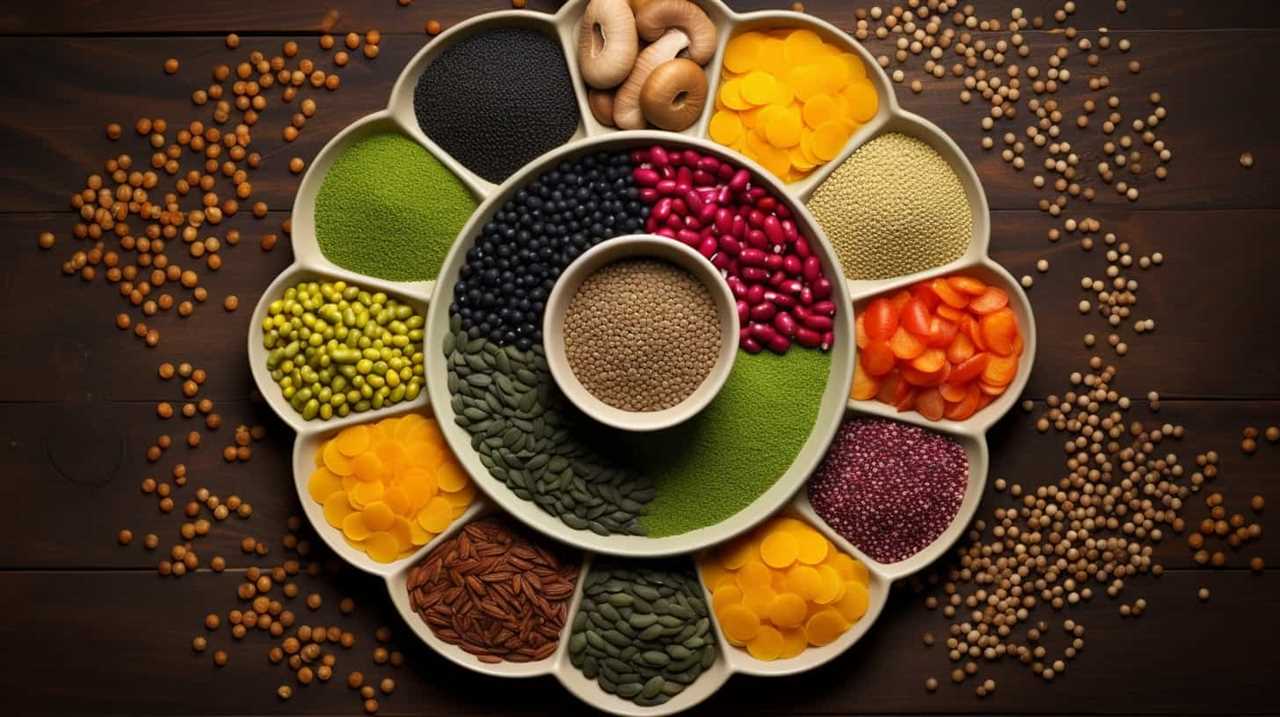
Soil Nutrient Optimization
We prioritize optimizing soil nutrients to ensure maximum chia seed cultivation profitability. To achieve this, we employ the following strategies:
- Soil Testing: Regular soil testing is crucial to assess nutrient levels and pH balance. By understanding the soil’s composition, we can make informed decisions about the appropriate fertilizers and amendments needed to optimize nutrient levels.
- Crop Rotation: Rotating chia crops with other plants helps prevent nutrient depletion and reduces the risk of pests and diseases. Different crops have varying nutrient requirements, so rotation allows the soil to replenish specific nutrients while minimizing the buildup of others.
- Organic Matter Addition: Adding organic matter, such as compost or cover crops, enhances soil structure and nutrient availability. It promotes beneficial microbial activity, which aids in nutrient cycling and improves overall soil health.
- Precision Fertilization: Applying fertilizers at the right time and in the correct amounts ensures efficient nutrient uptake by chia plants. Precision fertilization minimizes nutrient wastage, reduces environmental impact, and maximizes yield potential.
Fertilizer Application Techniques
To optimize nutrient management in chia seed cultivation, we employ effective fertilizer application techniques. The choice of fertilizer type and application rate is crucial for achieving optimal yield and quality. Chia plants have specific nutrient requirements, and it’s important to select fertilizers that provide these essential elements. Commonly used fertilizer types for chia cultivation include nitrogen (N), phosphorus (P), and potassium (K) fertilizers, as well as micronutrient fertilizers containing elements like iron, zinc, and manganese. The application rates of these fertilizers depend on various factors, such as soil fertility, chia variety, and growth stage. It’s important to carefully calculate and apply the appropriate amount of fertilizer to avoid nutrient imbalances or wastage. By following precise fertilizer application techniques, we can ensure that chia plants receive the necessary nutrients for optimal growth and development.
In order to prevent nutrient deficiencies and promote healthy chia plants, we must implement proper nutrient deficiency prevention strategies.
Nutrient Deficiency Prevention
One important aspect of nutrient management in chia seed cultivation is implementing effective strategies to prevent nutrient deficiencies. To ensure optimal plant health and maximize yield, it’s crucial to monitor micronutrient levels and provide organic nutrient supplementation as needed. Here are four key practices for preventing nutrient deficiencies:

- Monitoring micronutrient levels: Regularly assess the levels of essential micronutrients in the soil and plant tissue through soil testing and leaf analysis. This allows for timely adjustments and targeted nutrient supplementation.
- Organic nutrient supplementation: Incorporate organic fertilizers, such as compost or manure, to provide a diverse range of essential nutrients. These organic sources not only replenish the soil but also improve its overall structure and fertility.
- Balanced fertilizer application: Apply fertilizers carefully, taking into account the specific nutrient requirements of chia plants. A balanced application ensures that all necessary nutrients are provided in the right proportions, preventing imbalances and deficiencies.
- Crop rotation: Rotate chia crops with other plant species to reduce the risk of nutrient depletion. This practice helps break pest and disease cycles, enhances soil fertility, and prevents the buildup of specific nutrient deficiencies.
Weed Control Strategies
As chia seed cultivators, we regularly employ effective weed control strategies to ensure profitable yields.
One of the most efficient techniques we use is mulching. Mulching involves covering the soil around the chia plants with a layer of organic material, such as straw or wood chips. This helps to suppress weed growth by blocking sunlight and preventing weed seeds from germinating.
Additionally, the organic mulch breaks down over time, adding nutrients to the soil and improving its overall health.
Another organic alternative we utilize is manual weeding. Although it can be labor-intensive, manually removing weeds ensures that they’re completely eradicated without the use of harmful chemicals.
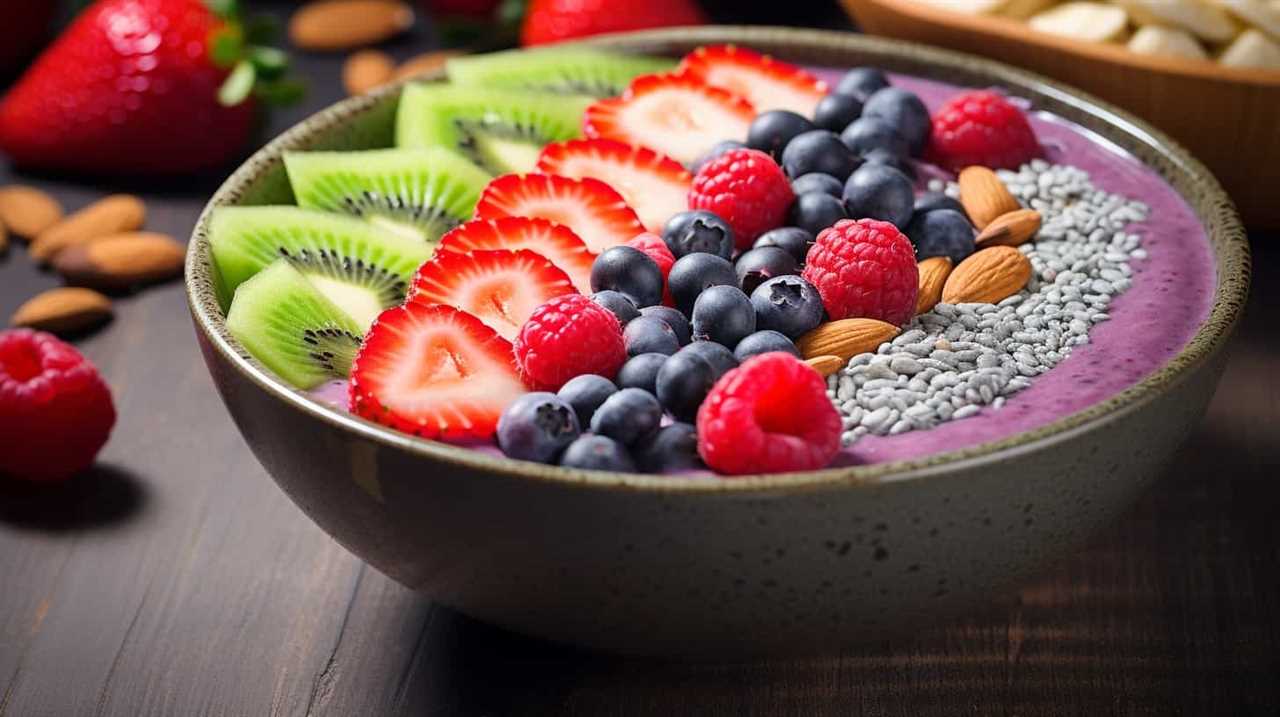
Pest and Disease Management
We continue addressing the challenges of chia seed cultivation by implementing effective pest and disease management practices. To ensure the health and productivity of our chia plants, we employ integrated pest management strategies and natural disease control methods. Here are four essential practices to consider:
- Regular scouting and monitoring: We conduct routine inspections of our chia fields to detect any signs of pest infestation or disease development. This allows us to take timely action and prevent the spread of harmful organisms.
- Crop rotation: By rotating our chia crops with other unrelated plants, we disrupt the life cycles of pests and diseases. This reduces the risk of buildup and helps maintain a healthy ecosystem within our fields.
- Biological control agents: We introduce beneficial insects, such as ladybugs and lacewings, to naturally control pest populations. These predators feed on harmful insects, reducing the need for chemical interventions.
- Proper sanitation: We maintain clean and well-maintained fields, removing any plant debris or weeds that could serve as breeding grounds for pests and diseases. This helps minimize the presence of harmful organisms and promotes a healthy growing environment for our chia plants.
Proper Harvesting Techniques
When it comes to proper harvesting techniques for chia seeds, there are two main points to consider: optimal harvest timing and post-harvest storage tips.
Timing the harvest is crucial to ensure that the seeds are mature and ready for harvest, as harvesting too early can result in low-quality seeds.
Additionally, proper post-harvest storage is essential to maintain the seeds’ quality and prevent spoilage.
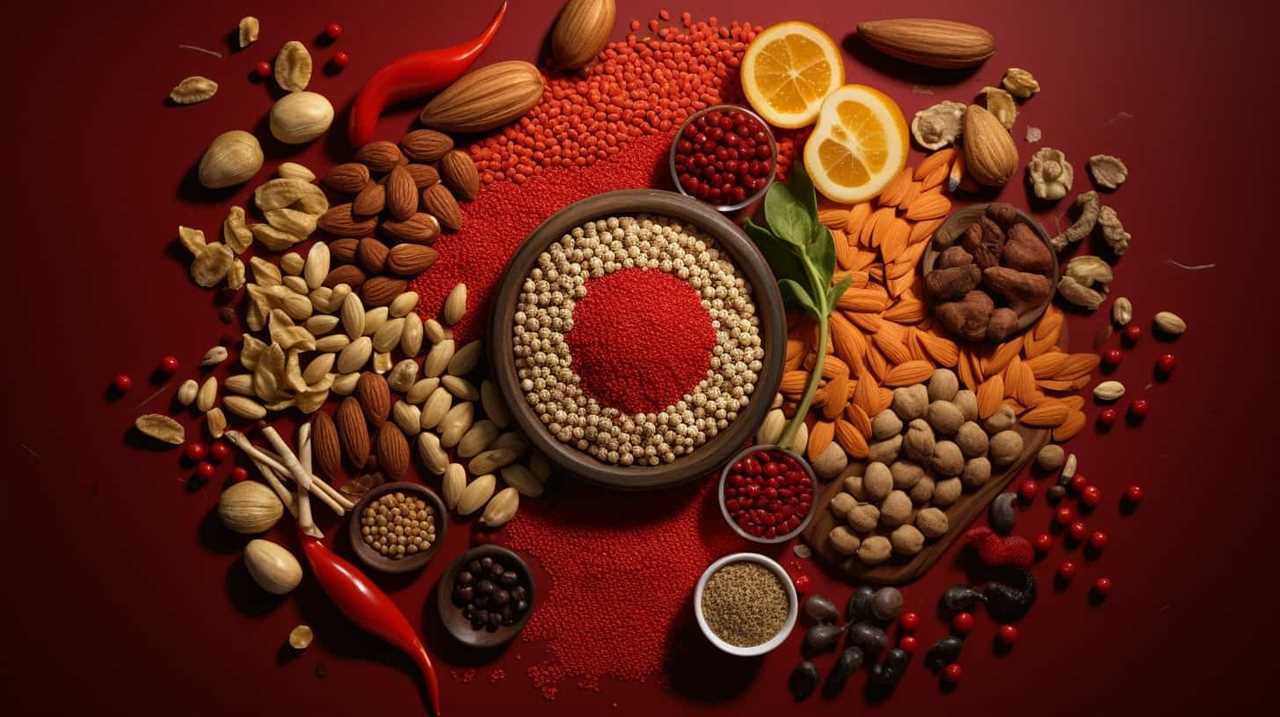
Optimal Harvest Timing
The optimal time to harvest chia seeds and employ proper harvesting techniques is essential for maximizing profitability in chia seed cultivation. To ensure the best results, it’s crucial to consider the following factors:
- Optimal moisture levels: Harvesting chia seeds when the moisture content is at the right level is crucial. Seeds that are too moist can lead to mold growth, while seeds that are too dry may result in reduced quality and lower yields. Regular monitoring of moisture levels is important to determine the ideal time for harvest.
- Quality assessment techniques: Implementing effective quality assessment techniques is vital to ensure that only high-quality chia seeds are harvested. This involves evaluating factors such as seed size, color, and texture. Additionally, chemical analysis can be conducted to assess the nutritional profile of the seeds.
- Timing based on plant maturity: Harvesting chia seeds at the appropriate stage of plant maturity is essential for achieving optimal yields. Waiting until the plants have fully matured and the seed heads have dried is crucial to ensure maximum seed viability and quality.
- Consideration of weather conditions: Weather conditions, such as excessive rain or high humidity, can impact the optimal harvest timing. It’s important to avoid harvesting during periods of heavy rain or high humidity, as this can lead to increased moisture content in the seeds and potential quality issues.
Post-Harvest Storage Tips
To ensure the longevity and quality of harvested chia seeds, it is crucial that we employ proper post-harvest storage techniques. Moisture control and packaging techniques play a vital role in preserving the nutritional value and preventing spoilage of the seeds. Here are some key tips to consider:
| Moisture Control | Packaging Techniques |
|---|---|
| Dry the seeds thoroughly before storage to prevent mold growth. | Store the seeds in airtight containers to keep out moisture and pests. |
| Maintain a moisture level of 6-8% to prevent the growth of bacteria and fungi. | Use opaque containers to protect the seeds from exposure to light, which can degrade their quality. |
| Store the seeds in a cool and dark place to maintain their freshness. | Label the containers with the harvest date for easy identification and rotation. |
Efficient Processing Methods
How can we efficiently process chia seeds to maximize profitability?
There are several key methods to consider for processing efficiency and yield optimization:
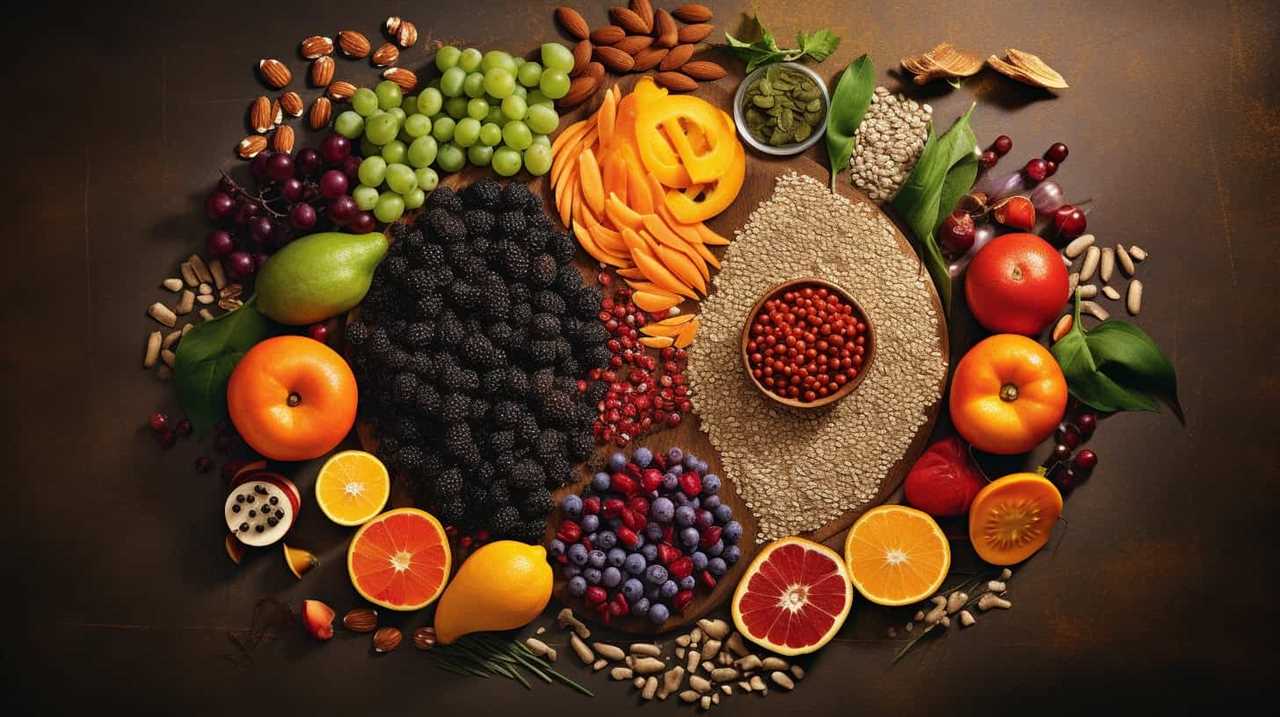
- Cleaning and sorting: Begin by removing any impurities or foreign matter from the chia seeds. Use modern cleaning equipment to achieve a high level of purity.
- Drying: Properly drying the chia seeds is crucial to prevent spoilage and ensure a longer shelf life. Use low-temperature drying methods to preserve the nutritional value of the seeds.
- Milling: Milling the chia seeds into a fine powder increases their versatility and market value. Invest in high-quality milling equipment to achieve consistent particle size and maximize yield.
- Packaging: Use airtight packaging materials to maintain the freshness and quality of the processed chia seeds. Properly labeled packaging will also help attract customers and increase sales.
Efficient processing methods are essential for maximizing profitability in chia seed cultivation.
Now, let’s explore the next topic: post-harvest storage solutions.
Post-Harvest Storage Solutions
After efficiently processing chia seeds to maximize profitability, we now turn our attention to exploring post-harvest storage solutions. Proper storage of chia seeds is crucial to maintain their quality and extend their shelf life.
One important aspect is drying methods. Chia seeds should be dried thoroughly before storage to reduce moisture content and prevent mold growth. Common drying methods include air drying, sun drying, and mechanical drying.
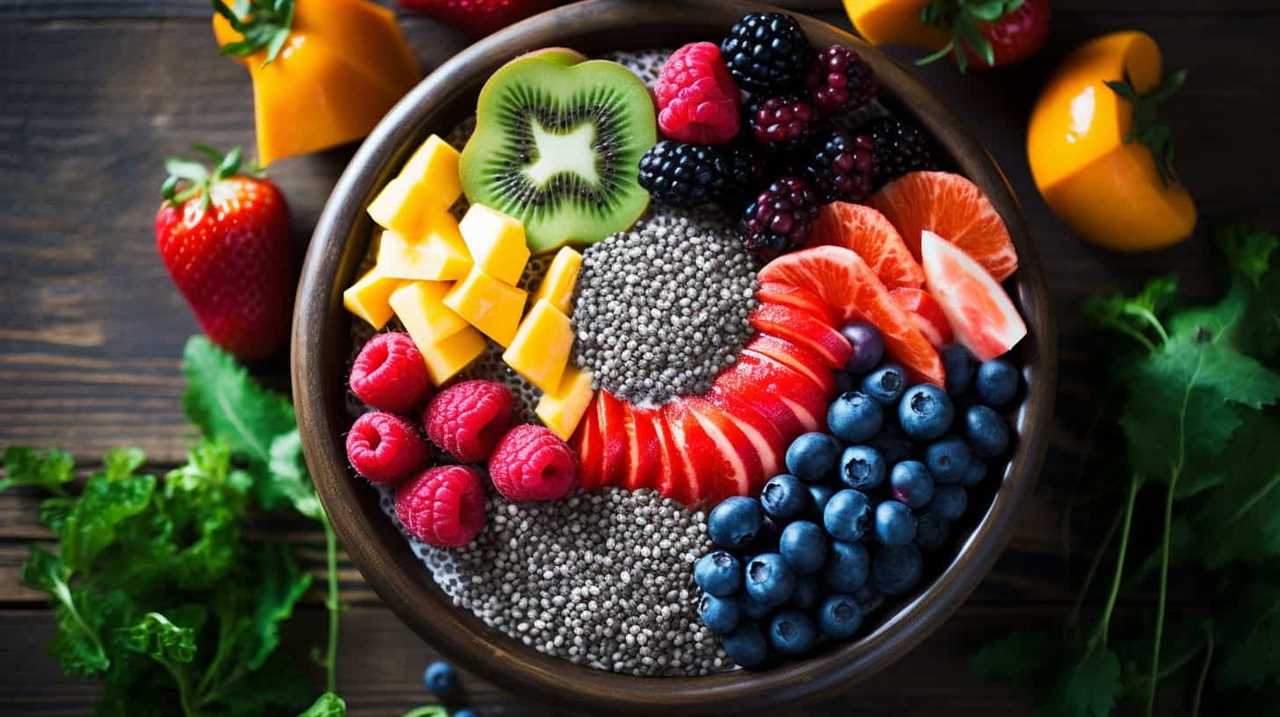
Additionally, packaging techniques play a significant role in preserving the freshness of chia seeds. It’s recommended to use airtight containers or vacuum-sealed bags to minimize exposure to air and moisture. This will help retain the nutritional value and prevent the seeds from going rancid.
Now that we’ve discussed post-harvest storage solutions, let’s move on to the next section about marketing and sales strategies.
Marketing and Sales Strategies
Now, let’s delve into our marketing and sales strategies for chia seed cultivation. To ensure a successful venture, we must implement effective sales promotion techniques and accurately identify our target audience. Here are four key strategies to consider:
- Conduct Market Research: Thoroughly analyze the market to identify potential customers and understand their needs and preferences. This will allow us to tailor our marketing efforts and product offerings accordingly.
- Develop a Strong Brand Identity: Create a compelling brand that resonates with our target audience. This includes designing a visually appealing logo, packaging, and website, as well as crafting a unique selling proposition that sets us apart from competitors.
- Implement Digital Marketing: Leverage various digital marketing channels such as social media, email marketing, and search engine optimization to reach our target audience effectively. Engage with potential customers through captivating content and interactive campaigns.
- Build Relationships and Partnerships: Collaborate with health food stores, supermarkets, and online retailers to expand distribution channels. Foster relationships with influencers and health enthusiasts who can endorse and promote our chia seed products.
Continuous Learning and Improvement
To further enhance our chia seed cultivation business, we continuously strive to learn and improve our practices. Continuous improvement is a vital aspect of our business philosophy, as we believe that lifelong learning leads to innovation and increased profitability.

We actively seek out new information, techniques, and technologies to stay ahead in the industry. Our commitment to lifelong learning drives us to attend industry conferences, participate in workshops, and collaborate with experts in the field. We also encourage our team members to engage in professional development activities, such as training programs and certifications.
Conclusion
In conclusion, implementing the 12 profitable practices for chia seed cultivation can significantly enhance productivity and profitability.
By employing effective soil preparation, selecting high-quality seeds, and optimizing planting time, farmers can lay a strong foundation for successful chia seed cultivation.
Adopting efficient irrigation techniques and managing nutrients appropriately are crucial for ensuring the healthy growth of chia plants and maximizing yield.
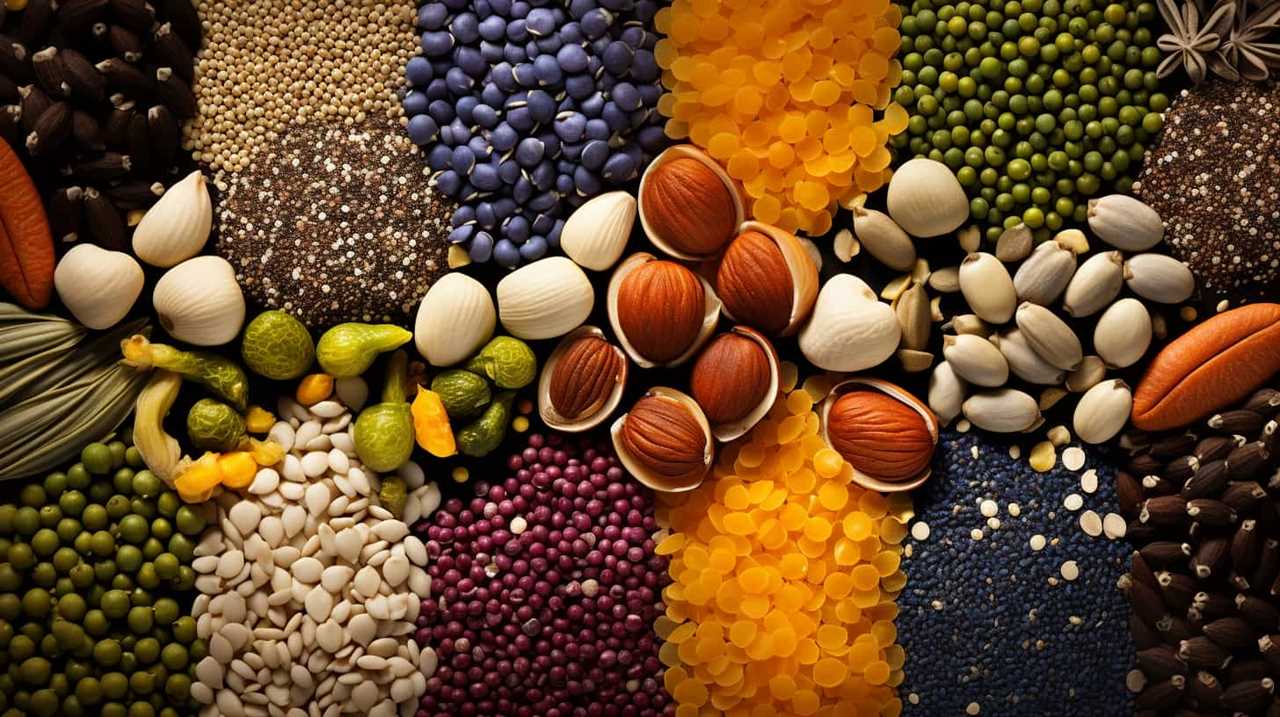
Utilizing efficient processing methods and implementing post-harvest storage solutions are essential for preserving the quality of chia seeds and preventing any potential losses.
Additionally, adopting effective marketing and sales strategies is vital for farmers to effectively promote and sell their chia seed products.
Continuous learning and improvement are also essential in staying ahead in this competitive industry.
By following these practices, farmers can experience remarkable growth and success in their chia seed cultivation ventures.
